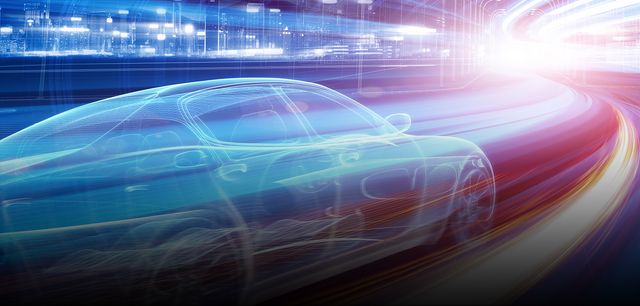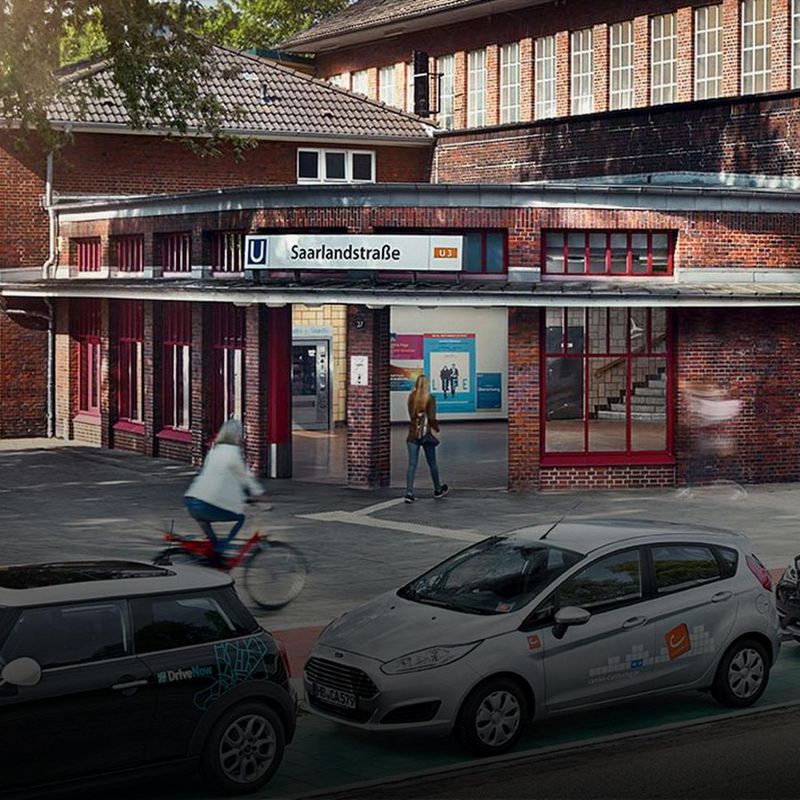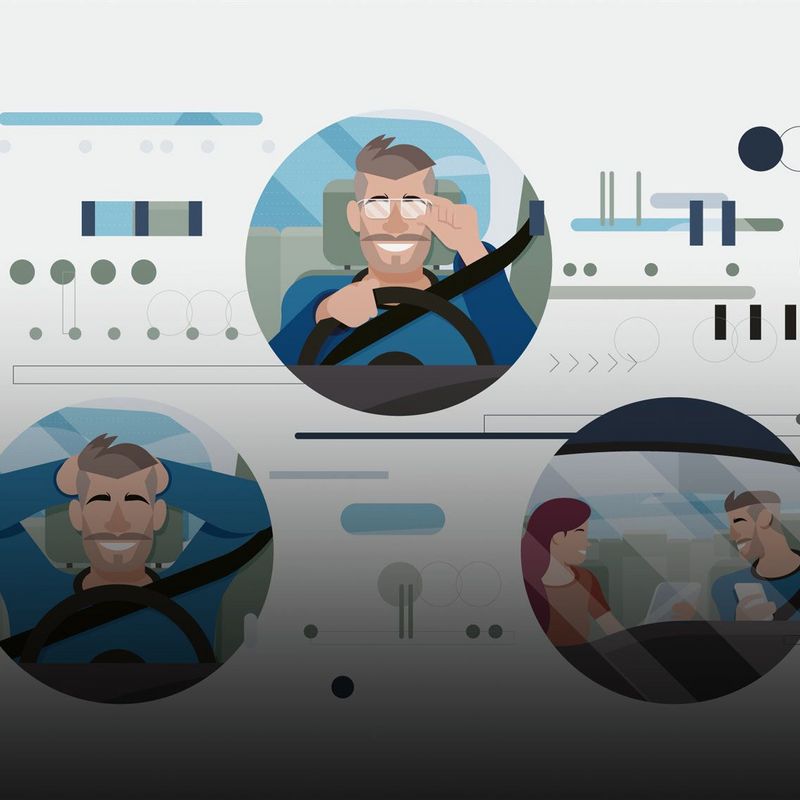15. July 2021
It was only a few years ago that the “robot car” seemed almost to be waiting at the gate – more recently, however, things have noticeably quietened down on the automated driving front. The German government is now seeking to give the technology a boost by changing the law. Exactly what will the “Autonomous Driving Act” make possible? Which of the five stages of automation are we currently at, and how are things going to proceed internationally? All these questions are addressed in this interview with Katrin Leicht from TÜV NORD.
#explore: Self-driving buses are being tested in many parts of Germany, albeit always subject to special authorisation. What will the “Autonomous Driving Act”, already passed by both chambers of the German parliament, change?
Katrin Leicht: The “Autonomous Driving Act” sets out the possibility of deploying fully automated vehicles at Level 4 while dropping the requirements for special authorisation and a safety driver. In this case, a control and monitoring centre – the Technical Monitoring system – would be the body of last resort with the duty to intervene in an emergency. The plan with this regulation is for the first vehicles of this kind to be approved as early as 2022. Germany will thus be the first country in the world to allow driverless vehicles onto the road at the national level.
The “Autonomous Driving Act” isn’t intended to offer blanket authorisation for these vehicles; the idea is instead for them to be deployed in limited scenarios. What is the specific thinking here?
The idea is to allow the on-road operation of shuttle vehicles – that is, people carriers – and trial vehicles. In specific terms, we’re looking at minibuses which take passengers on fixed routes or goods transporters designed to carry goods for the last part of their journey or between two distribution centres. “Limited scenarios” also means that the area earmarked for their deployment is surveyed and assessed in advance by the Technical Service people and the authorities.
Which tasks come within the remit of the Technical Monitoring body?
That depends on the nature of the envisaged deployment area. There needs to be a clear definition of the tasks and situations which the system can cope with independently, where it will run up against its limits and when the control centre will have to step in. For instance, if a sensor fails, the vehicle must be able to make itself safe – by stopping at the roadside, for example. It would then be able to report this fault to the Technical Monitoring team, which would in turn take the appropriate measures. If there isn’t a safety driver on board, these vehicles will also have to have the communication channels they need to be aware of their environment. After all, there are lots of exceptional situations in which human drivers communicate by making eye contact or using gestures.
The Bundesrat, the upper house of the German parliament, has called for a few changes to the law in its report on the draft legislation. Among other things, the law should explicitly state that the vehicles must be capable of responding to traffic police offers and giving way to oncoming fire engines to allow them to get past. From the technical point of view, is this is already possible?
The vehicles need to be able to respond to flashing blue lights and traffic officers, of course. This is something we’re calling for as well. If there’s an accident on the motorway, for instance, they will also have to be able to follow the instructions of the emergency services or at least record them. In technical terms, there are a number of conceivable options here – but we’ll have to wait and see which solution turns out to be the successful one. Another conceivable option would be for the Technical Monitoring system to take over at this point. But if it had to intervene to control a number of vehicles at once, this kind of system could quickly run up against its limits. So, when it comes to designing the Technical Monitoring system, we need to define how many vehicles this kind of control centre can reliably monitor at once.
Does the legislation address the key question of liability?
There are indeed a few open questions here. The “Autonomous Driving Act” does set out the duties of vehicle owners, technical monitoring systems and carmakers. But who exactly is liable when and in which situations, or which criteria are used to determine liability, still needs to be worked out in detail.
The minibuses which have been tested to date run on virtual tracks and stop when they run up against an obstacle. If they are going to be able to integrate themselves into the traffic flow, they will also, of course, need to be able to overtake. Are the vehicles already capable of doing this?
We’re currently involved in a project to optimise highly automated buses, which also features overtaking manoeuvres. This kind of extension of the operating range requires the perfect dovetailing and seamless interplay of safety concepts, localisation and environment monitoring systems. Here, we’re collaborating, among others, with the technical university of Braunschweig, which is working on these systems and assessing them with a view to getting them approved for road use.
The German government sees the “!Autonomous Driving Act” as an interim solution until such time as standard international regulations are adopted. How far are we away from that point?
Work is already ongoing at the European level on statutory requirements for highly automated Level 4 systems. The final draft legislation is scheduled for presentation in 2022. Once the statutory regulations are in place, we shouldn’t then have too long to wait for the technical concepts.
What level of autonomous driving do we currently find ourselves on?
For mass-production vehicles, the first Level 3 assistance systems have been permitted at UN level since January 2021. In specific terms, these relate to automated lane-keeping systems, or ALKS for short. In motorway driving, the systems can stay in lane, accelerate and brake independently at a speed of up to 60 km/h. Drivers can do other things during this time but have to take control again as soon as the car tells them to. Honda has launched its first car with Level-3 functionality in Japan. German carmakers haven’t yet applied for the authorisation for such a system, so it obviously hasn’t yet been granted. So, in Germany, we’re effectively still at Level 2.
© iStockThanks to ALKS, vehicles in Level 3 can already keep to the lane independently.
How much time do drivers have to take back control of the car once told to do so?
They have ten seconds to take up the reins again. This is a challenge to both drivers and the technology. In ten seconds at 60 km/h you can travel 160 metres – which is a fair distance. So, the system needs to be capable of clearly recognising its own limits in advance and remaining fully functional during the transition.
Such Level 3 systems should in the future be capable of driving at up to 130 km/h. At this speed, you will cover 360 m in ten seconds. And it’s significantly harder to suddenly get your bearings in the traffic situation again. Is it even possible for this to be done safely?
The faster you’re going, the earlier the system needs to recognise its limits and the more of the route ahead it needs to monitor. Connecting vehicles might improve the “distance vision” of everyone involved – but that’s still largely a pipe dream. But the demographic change is also a problem. The number of elderly people is growing. And the older the drivers, the more time they need to get their bearings behind the wheel. As this transfer of control from a human driver to a machine is such a big challenge, some manufacturers would prefer to skip Level 3 and go directly to Level 4. The aim would be to reduce the frequency of situations in which the human driver has to intervene.
“The increase in the number of driving situations is multiplying the requirements on the testing grounds.”
What does the increasing level of automated driving mean for testing these systems?
This is giving rise to a whole raft of challenges for the testing organisations. The more tasks the machine takes on, the greater the number of traffic situations it needs to be able to master – and these all have to be tested, of course. The more precisely these scenarios are defined and described, the easier it will be to validate them. Which is why we need standardised catalogues of driving situations so that we and other technical service providers can also carry out comparable tests. The increase in the number of driving situations is multiplying the requirements on the testing grounds. In the international working groups, we’re currently trying to work our which available testing grounds across the world would be suitable for the testing of automated systems in the first place. But even if you had the ideal testing ground, you still wouldn’t be able to replicate all the scenarios. Sensors and systems need to function reliably in different light and weather conditions, but you can’t conjure these up at the touch of a button. This means that there’ll be no getting round the need for virtual testing methods, even further into the future. These kinds of virtual testing methods are currently being developed and validated in the context of a collaboration on autonomous driving between Germany and Japan.
The ultimate goal is Level 5 autonomous driving, in which all the driving functions are looked after by the car itself. How far do you think we are from that point in technical and regulatory terms?
As far as I can see, the use of self-driving cars at Level 5 isn’t yet on the horizon. The work is ongoing, and it’s ultimately only a question of time. But, at the moment, it’s a major challenge, because vehicles like these will have to be able to manage all traffic situations safely and independently.
© iStockSit back and let the car do everything? Level 5 is still a dream of the future.
Not that long ago, announcements about self-driving cars seemed to be coming out on a weekly basis. In the past few years, however, we’ve heard a lot less on the subject. Were the carmakers a bit over-confident about the possible market maturity of these systems?
You’re right in that, after the initial hype, things did quieten down a bit when it came to autonomous driving. But you get this kind of trend with most new technologies. Gartner’s hype cycle describes this very accurately: at the beginning you get a technological trigger, in this case the developments generated by Google. From there, it’s full speed ahead to the “summit of exaggerated expectations” before you plunge headlong into the “valley of disappointment”, until, at some point, things balance out, and you find yourself on the “plateau of productivity”. It’s no different with electromobility. But just how quickly or otherwise such systems will hit the road is also a matter of public acceptance – and this varies from country to country. We Germans are more conservative and safety-minded, whereas, for instance, the Asian countries tend to be more aggressive in trialling such systems. As far as the state of technical development is concerned, when you consider the overall package consisting of vehicles, hardware and software, Germany and its auto industry are fundamentally in a good place. If you just look at the software at the heart of it all, IT companies like Google do, of course, have a massive lead. It’s both an enormous competitor and a major driver at once.
Particularly in Germany, the argument you always hear against self-driving cars you always hear is that people are very reluctant to surrender control to a machine. If you do, driving stops being fun. Does the strength of this desire to drive for yourself vary from country to country, or are the manufacturers simply ignoring the needs of their customers in the development of this technology?
The differences aren’t just between countries but also between the generations. For the younger generation, the car is no longer a status symbol. And individual mobility, at least in the big cities, is taking increasingly multi-modal forms. To get quickly from A to B, you use different forms of transport. The more dependable the appropriate vehicle is for each route, the more intense the focus is on the advantages of not having to drive yourself. For many young people, having a good internet connection and the possibility of spending the journey on your smartphone outweighs the benefits of sitting behind the wheel of your own car.
These might interest you too:
ABOUT KATRIN LEICHT
© TÜV NORD
Katrin Leicht is a mechanical engineer and type tester for driver assistance systems at TÜV NORD’s Institute for Vehicle Technology and Mobility (IFM). Her work there involves autonomous and networked driving, and she is working with her colleagues to come up with solutions to ensure that such systems can be safely unleashed on public roads.





